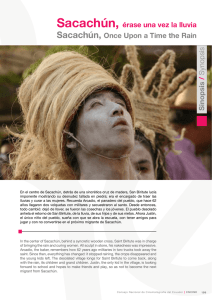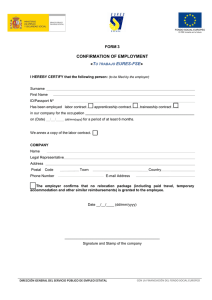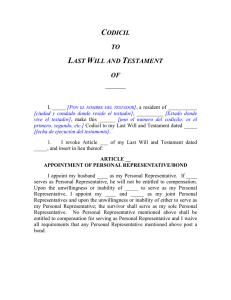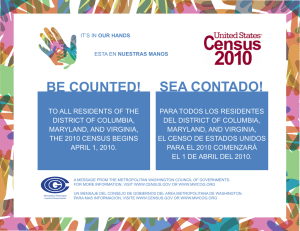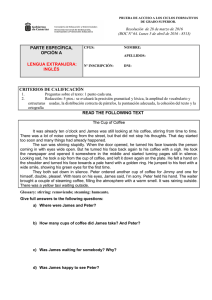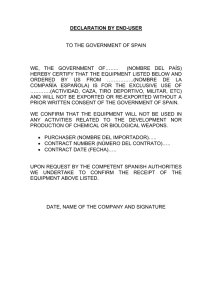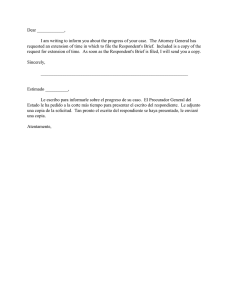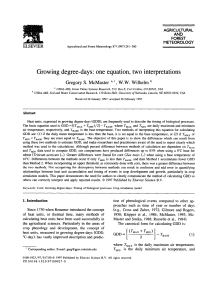077. Cuando la comida despreció a la gente
Anuncio
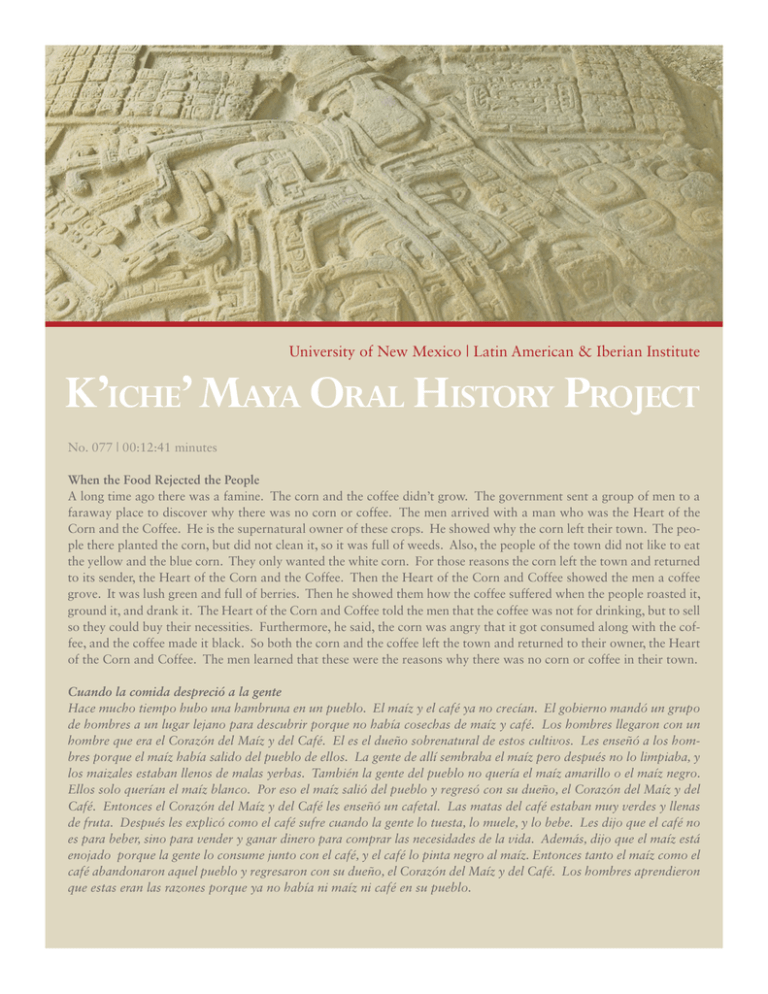
University of New Mexico | Latin American & Iberian Institute K’iche’ Maya Oral History Project No. 077 | 00:12:41 minutes When the Food Rejected the People A long time ago there was a famine. The corn and the coffee didn’t grow. The government sent a group of men to a faraway place to discover why there was no corn or coffee. The men arrived with a man who was the Heart of the Corn and the Coffee. He is the supernatural owner of these crops. He showed why the corn left their town. The people there planted the corn, but did not clean it, so it was full of weeds. Also, the people of the town did not like to eat the yellow and the blue corn. They only wanted the white corn. For those reasons the corn left the town and returned to its sender, the Heart of the Corn and the Coffee. Then the Heart of the Corn and Coffee showed the men a coffee grove. It was lush green and full of berries. Then he showed them how the coffee suffered when the people roasted it, ground it, and drank it. The Heart of the Corn and Coffee told the men that the coffee was not for drinking, but to sell so they could buy their necessities. Furthermore, he said, the corn was angry that it got consumed along with the coffee, and the coffee made it black. So both the corn and the coffee left the town and returned to their owner, the Heart of the Corn and Coffee. The men learned that these were the reasons why there was no corn or coffee in their town. Cuando la comida despreció a la gente Hace mucho tiempo hubo una hambruna en un pueblo. El maíz y el café ya no crecían. El gobierno mandó un grupo de hombres a un lugar lejano para descubrir porque no había cosechas de maíz y café. Los hombres llegaron con un hombre que era el Corazón del Maíz y del Café. El es el dueño sobrenatural de estos cultivos. Les enseñó a los hombres porque el maíz había salido del pueblo de ellos. La gente de allí sembraba el maíz pero después no lo limpiaba, y los maizales estaban llenos de malas yerbas. También la gente del pueblo no quería el maíz amarillo o el maíz negro. Ellos solo querían el maíz blanco. Por eso el maíz salió del pueblo y regresó con su dueño, el Corazón del Maíz y del Café. Entonces el Corazón del Maíz y del Café les enseñó un cafetal. Las matas del café estaban muy verdes y llenas de fruta. Después les explicó como el café sufre cuando la gente lo tuesta, lo muele, y lo bebe. Les dijo que el café no es para beber, sino para vender y ganar dinero para comprar las necesidades de la vida. Además, dijo que el maíz está enojado porque la gente lo consume junto con el café, y el café lo pinta negro al maíz. Entonces tanto el maíz como el café abandonaron aquel pueblo y regresaron con su dueño, el Corazón del Maíz y del Café. Los hombres aprendieron que estas eran las razones porque ya no había ni maíz ni café en su pueblo. UNM LATIN AMERICAN & IBERIAN INSTITUTE Project Background The stories and rituals included in this collection were collected between 1968 and 1973. All of them are narrated in the K’iche’ Maya language of Guatemala with almost all of the narrators speaking the Nahualá-Santa Catarina Ixtahuacán dialect of that language. Collected and recorded by Dr. James Mondloch Transcribed by Miguel Guarchaj Ch’o’x and Diego Guarchaj Funding and support provided by The UNM Latin American and Iberian Institute and the US Department of Education Title VI National Resource Center grant. Title page image provided courtesy of Dennis G. Jarvis Usage rights Copyright © 2011 The University of New Mexico, Latin American and Iberian Institute. All Rights Reserved. You may print, reproduce and use the information in, and retrieve files containing publications or images from, The University of New Mexico’s WWW documents for non-commercial, personal, or educational purposes only, provided that you (i) do not modify such information, and (ii) include any copyright notice originally included with such information and this notice in all such copies. Alternative formats In accordance with the Americans with Disabilities Act, the information contained herein is available in alternative formats upon request. Additional information about this project is available online http://laii.unm.edu/kiche Correspondence should be directed to The University of New Mexico Latin American & Iberian Institute 801 Yale Boulevard NE / MSC02 1690 1 University of New Mexico Albuquerque, New Mexico 87131-0001 Phone: (505) 277-2961 Fax: (505) 277-5989 E-mail: laii@unm.edu Web: http://laii.unm.edu
